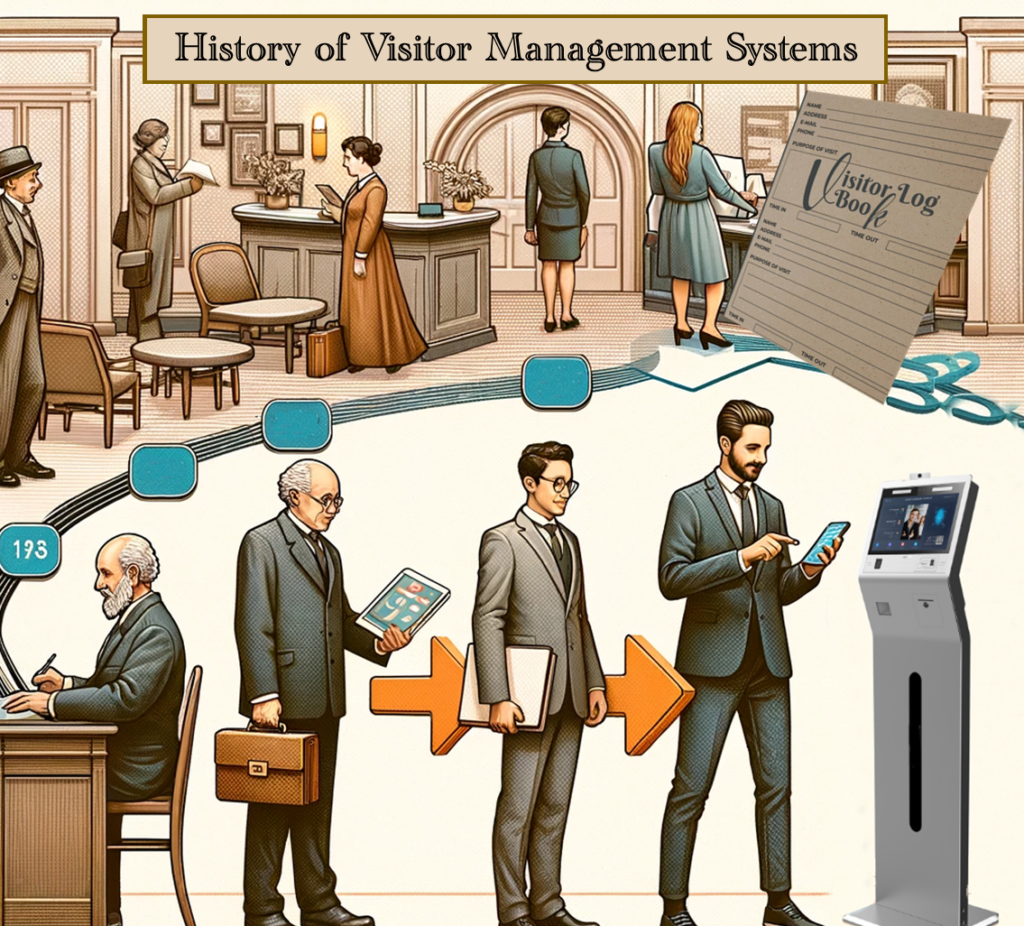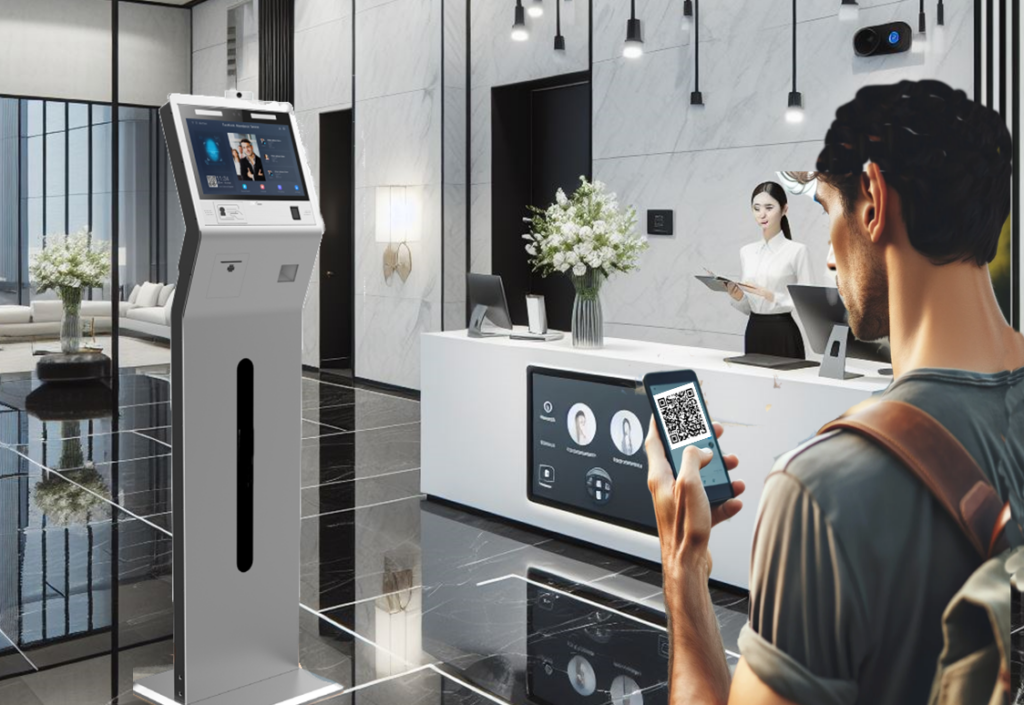From Paper Logbooks to Automated Computer Visitor Management Systems

Introduction to Visitor Management:
Visitor management has come a long way since the advent of computerized visitor management systems, transforming from traditional paper logbooks to modern, efficient systems prioritizing security and convenience. This evolution reflects the advancement of technology and the growing need for streamlined, automated, and more secure processes. In this article, we will explore the key milestones in the evolution of visitor management, highlighting the transition from manual sign-ins to digital solutions and the integration of smartphones and QR codes.
This article reviews the history of Visitor Management Systems.
Visitor Manual Sign-In with Logbooks:
Before the 1990s, the standard method for tracking visitors involved a manual sign-in process using logbooks. Whether it was a corporate office, school, or event venue, visitors were required to provide their details in a physical book, including their name, purpose of visit, and the person they were meeting. While this method served its purpose, it lacked efficiency, security, and the ability to retrieve data quickly.
Concierge and Computerized Sign-In Enhances Visitor Registration:
As technology progressed, computerized systems brought a new efficiency level to visitor management. Concierge desks and reception areas began using computers to streamline the sign-in process. Visitors could now interact with a digital interface, providing their information on a computer or tablet. This not only improved the speed of registration but also enhanced the overall professionalism of the entry process.

Badge Printing for Visitor Management Provides Enhanced Security:
In the early 2000s, with the shift to digital sign-in, the integration of badge printing became a crucial step in visitor management. Instead of relying solely on handwritten visitor badges, organizations started using badge printers to generate professional-looking identification for each visitor. These badges often included a photo, name, and other relevant information, enhancing security and making it easier to identify authorized personnel.
Smartphone Integration and QR Codes Streamline Visitor Management:
After 2010, the widespread use of smartphones revolutionized visitor management once again. Many organizations adopted mobile-friendly solutions, allowing visitors to preregister using their smartphones before arriving on-site.

The introduction of QR codes has played a pivotal role in this evolution. Organizations have the luxury of planning by sending visitors a unique QR code via text or email. This provides advanced registration for their appointment. When guests arrive, they present their QR code and authentication key to a dedicated scanner. Along with capturing a live photo, they are digitally logged into the premises.
This seamless and contactless process enhances efficiency and security while providing a more modern and user-friendly experience.
ID Verification and Identifying Blacklisted Individuals Before Visitor Entry
By 2015, many Visitor Management Systems added driver’s license scanners. This allowed them to enter identification information into the Visitor Management software automatically. It also allowed the system to compare the ID to a government database. It enabled them to identify any blacklisted individuals.
Blacklists are databases containing information about individuals or entities deemed a potential threat or having a history of undesirable behavior. These include former employees with a misconduct record, individuals with a criminal background, parents prevented from seeing a child, or anyone deemed a security risk. Maintaining such lists aims to identify and mitigate potential threats preemptively.
The Evolution of Visitor Management Conclusion:
The evolution of visitor management reflects the ongoing commitment to improving security, efficiency, and user experience in various settings. From the humble logbook to the integration of QR codes and smartphones, the journey has been marked by advancements that prioritize both the facility’s safety and the visitors’ convenience. As technology continues to advance, we can expect further innovations in visitor management, making the process even more streamlined and secure.
If you want help selecting your Visitor Management System, please get in touch with us at 1-800-431-1658 in the USA or 914-944-3425 everywhere else, or use our contact form.